Square Foot Gardening Spacing Kale
I LOVE kale. If I could only grow one thing it would be kale. It's nutritious, delicious, and growing kale is simple. It requires little maintenance and a single plant provides a lot of food. Plant kale and you'll get a continuous supply of greens throughout the year.
For my climate, kale is the perfect vegetable. It doesn't bolt in the heat of the summer like lettuce or spinach does, and it gets even tastier when touched by frost at the end of the gardening season. With some protection, you can even overwinter this hardy veggie and enjoy it all year round.
While I've enjoyed starting seeds for different varieties of tomatoes, lettuce, and other plants, I have a particular fondness for experimenting with kale. I've tried nearly every variety there is and I love seeing new crosses pop up. In my mind, kale is a wonder plant.
That doesn't mean it doesn't have its troubles. My biggest issue when growing kale is dealing with pests. But when all is said and done, it's well worth the effort.
Below you'll find our comprehensive guide to growing kale and how to tackle any issues you may have. You'll also find info on kale varieties, care, and more for this indispensable green.
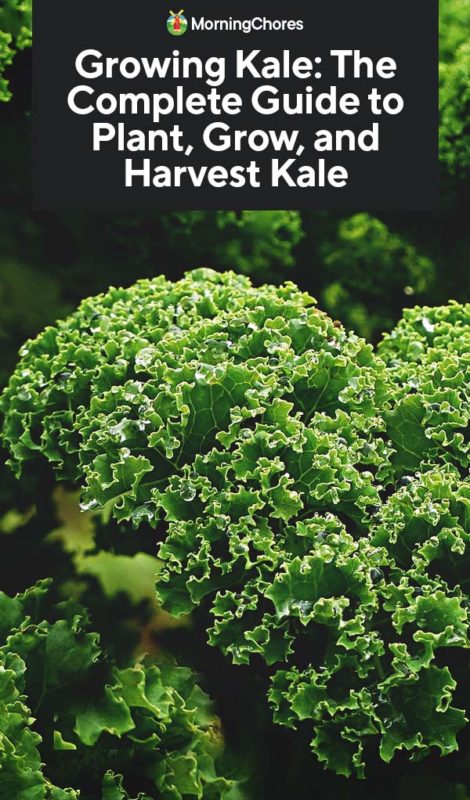
Kale Varieties
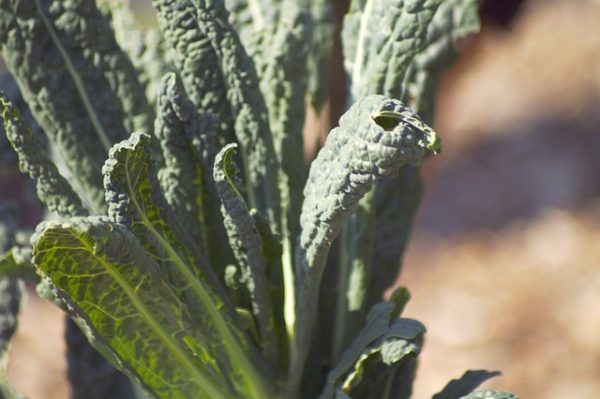
I've experimented with plenty of kale varieties. Each year I select a few types, including tried-and-true favorites and new ones, to see which grow best. Here are a few of my top picks:
- Blue Curled Scotch – This is one of the first kale types I grew as a new gardener. The plant is easy to grow and provides densely curled leaves that look pretty on a plate. It's also available in a dwarf version.
- Lacinato – A super attractive variety that's also known as dinosaur kale. When full-grown they look like little palm trees. The leaves taste great cooked or raw. You've likely seen this in your grocery store.
- Red Russian – Broad, green leaves and purplish veins make this an attractive plant in the garden. It tastes better after exposure to frost.
- White Russian – A cold-hardy kale variety perfect for northern gardens.
- Red Ursa – Another purple-veined variety. Leaves are smooth and the taste is similar to the Red Russian variety.
- Darkibor – Leaves of this hybrid have a deep, dark green hue and are curly.
- Meadowlark – Thickly curled kale with a sweet flavor and excellent cold-resistance.
- Scarlet – An all-over purple kale hybrid with curly leaves that's a prolific producer. One of my favorites to grow, because it adds color to the garden and the dark leaves make it easier to spot cabbage worms.
- Siberian – I love this variety of kale. It's not the most attractive, but the leaves are super tender, the plants grow quickly, and a little frost won't hurt it.
- Vates – A dwarf kale with a compact growth habit perfect for containers.
- Westlander – Features bight green curly leaves that make beautiful bunches. The plant is cold hardy.
- Winterbor – This variety has lovely blue-green, ruffled leaves. It's one of the most cold-hardy kales.
Planting Kale
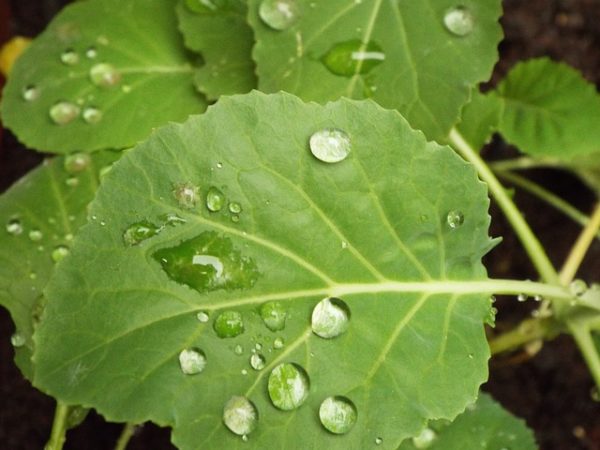
Whether you decide to start these plants indoors or outside, the beauty of growing kale is that it's simple.
When to Plant Kale
Kale is a cool-season crop, so you can direct sow in the early spring. I prefer to start indoors and set out larger plants when the time comes to transplant. That way, I can harvest sooner once the gardening season begins. Plant indoors 3-5 weeks before last frost date.
When transplanting outside, harden off for 10 days. Transplant when seedlings have 3 leaves and temps reach 50°F.
That said, kale is one of the wonderfully versatile plants that you can transplant or sow nearly anytime during the season. Though it prefers cooler weather, warm summers won't cause it to bolt or die off. Yet another reason it's my go-to crop.
If you choose to plant an extremely cold-hardy variety – and there's no shortage of those in the kale world – for a fall or winter harvest, make sure that the plant has enough time to grow to a large enough size before frost sets in.
You'll be able to harvest kale all winter long. In particularly cold climates, you might need to protect your kale with a cold frame or heavy mulching, but otherwise, this plant is an excellent source of food in the winter months. In zones 8 through 10, kale can be planted all year round.
Light & Soil Requirements
Kale tolerates partial shade, so if your garden doesn't get lots of sun, you can still grow this leafy vegetable. Full sun encourages rapid growth, but be sure to mulch around the base to conserve moisture.
Loamy, well-drained soil with a pH between 5.5-6.8 is best, though kale isn't terribly fussy.
Where to Grow Kale
Kale can be grown anywhere you have space for it. Certain varieties of kale add a decorative element to containers. I often see cities use kale as an ornamental addition to flower plantings. Kale is a good choice for those with limited space (e.g. balcony garden). It does equally well in beds, raised gardens or in-ground.
Kale thrives in zones 7-10.
Germination Time
Kale seeds prefer cooler soil in order to germinate.
Germination time depends on the variety, but generally, kale germinates faster than other plants. You should expect to see sprouts in less than a week.
Spacing Kale
Spacing depends on the type of kale you're planting, and I like to experiment a little with spacing. For baby kale greens, I grow four plants per square foot. If I want full sized plants, I plant two per square foot. That's a minimum of 12-inches between plants.
Caring for Your Kale Plants
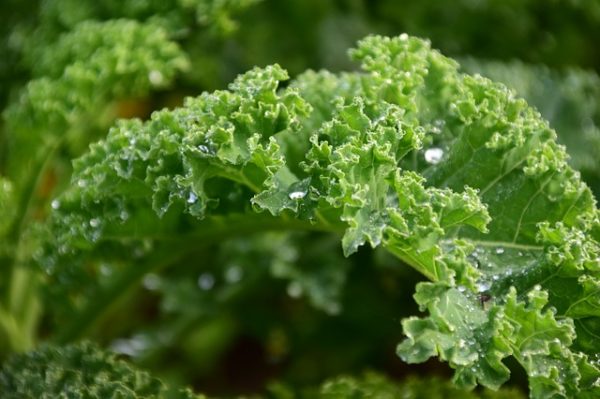
Watering
Kale requires regular waterings, though some varieties tolerate drought better than others. I plant my kale in full sun, and the topsoil tends to dry out quickly. I mulch around the base of the plant to conserve water.
Give around 1 to 1.5-inches of water per week.
Temperature
Kale is a versatile plant that grows in a variety of temps. I see people all over the world successfully growing this vegetable. Hot weather won't cause it to bolt, and the cooler weather won't cause it to wilt. Kale prefers cooler weather, however, and seeds won't germinate as quickly in warm soil.
Fertilizing
A medium feeder, kale does best with a balanced fertilizer application after you first harvest its leaves. You'll probably only need to do this, though, if your soil is deficient.
Side fertilize with high nitrogen fertilizer while growing seedlings. Use manure compost during the growing season.
Pruning
There's no need to prune this plant. You essentially prune it as you harvest. If you're slow to harvest and find the outer leaves yellowing before you can snip them off, be sure to remove them to prevent pest activity.
Weeding
Proper spacing when growing kale should prevent the need for weeding, as does mulching.
Crop rotation
Kale belongs to the brassica family, so it's best to plan accordingly to prevent planting brassicas in the same area each year. I plant brassicas in clusters to make pest control easier, which in turn makes crop rotation a simple task.
Succession planting
Quick growing and easy to get going, kale is a great succession crop. Space out your plantings and you'll get a steady supply of kale throughout the season. If you trim kale at a reasonable rate, it will continue producing. That means if you're low on space, you don't have to plan for succession plantings.
I really like kale, though, so I grow multiple plants each year. Around 10 plants provide my husband and me with plenty of greens, though he's not fond of them. Like spinach, kale shrinks significantly when cooked, so keep that in mind when planning how much to grow.
Kale Pests & Diseases

Growing kale is relatively problem-free, in my experience, but there are a few issues you might encounter. When the pests are out of the equation, growing kale is a delight!
Cabbage Looper
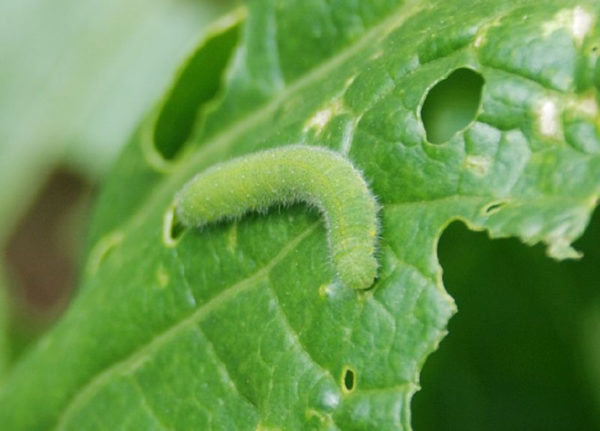
The dreaded cabbage looper (also known as the cabbage moth or inch-worm) is one of the most destructive cole crop pests out there. They began attacking my brassicas in my second year of gardening in my current location. Each year I've been trying to find a good way to deal with the pest.
The degree of damage varies from year to year, so I never know when disaster is going to strike. Like clockwork, though, once my seedlings are transplanted outdoors, pests take up residence, and I'm forced to deal with the problem.
Picking them off and drowning them in soapy water is the simplest solution, but you might need to use a multi-pronged approach if you have several plants.
This year, tired of hand picking the brassica-loving worms, I've invested in a pest cover to prevent an infestation.
You can also plant kale near herbs like parsley, dill, and fennel to discourage the worms. Trichogramma wasps are a natural predator. If nothing else works, you can use botanical insecticides like spinosad and BTK sprays to kill them off.
Beet armyworm
This is a pest that shows up in warmer climates. The larvae feed on foliage and can burrow into the buds of plants. While you can use insecticides to kill them, hand picking and washing plants in soapy water can help keep populations under control.
Large Cabbage White and Diamondback Moth
Pests like the large cabbage white and the diamondback moth attack brassicas and can cause serious damage. Rotate crops and grow trap crops like collards and mustard to help protect your kale.
Cutworms
Cutworms emerge early in the growing season to nibble on young leaves. They feed at the base of plants and can destroy an entire plant relatively quickly. Hand pick the bugs off plants or surround plants with diatomaceous earth. Prevent infestations by tilling your garden completely in the fall.
Cabbage Aphid
Also known as plant lice, you'll spot these gray-green little suckers in clusters on plants in the fall. Clip off infested leaves and spray the plant with insecticidal soap.
Flea Beetles
Flea beetles will nibble holes all throughout kale leaves. Spray them with a mixture of 3 parts water to 2 parts rubbing alcohol and 1 part dish soap. You can also dust your plants in talcum powder.
Thrips
Control thrips by placing sticky traps around plants and keep beneficial predators around.
Root-knot Nematode
This parasite pierces the roots of plants and lays eggs inside. Rotate crops regularly and pick resistant varieties to avoid the nasty pest.
Downy Mildew
Downy mildew is caused by critters related to algae. It shows up as white or yellow patches with a fuzzy coating on the underside of leaves. Give plants plenty of growing room and don't water overhead. You can also use copper spray to eradicate it.
Anthracnose
Anthracnose is a fungus that impacts kale. If you live in a rainy area, it can spread rapidly. To control it, destroy any infected plants and avoid overhead irrigation.
Alternaria Leaf Spot
Like all brassicas, kale is susceptible to Alternaria leaf spot. You can treat leaf spot with fungicide. Crop rotation, mulching, and spacing plants appropriately helps prevent them from taking hold in your garden.
Damping-Off
Prevent seedling damping-off by sterilizing all your pots, tools and trays in bleach. Never reuse potting mix and use clean water when watering seedlings. Wait until outdoor soil has reached the right temperature before planting.
Black Rot
Black rot is a fungus that attacks all kinds of plants. You'll see a V-shaped lesion forming on leaf margins. To prevent, rotate your plants and don't water overhead. Water in the morning so leaves can dry before the sun sets.
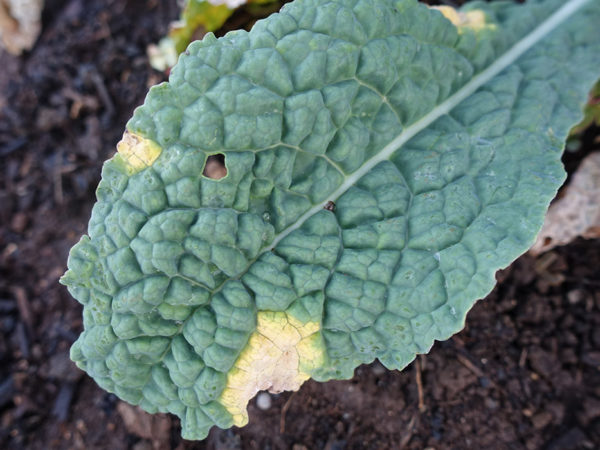
Companion Planting for Kale
Best Companion Plants
Plant kale near dill, fennel, coriander, parsley and sweet alyssum to help control the cabbage looper. Kale gets along well with many other plants including:
- Potatoes
- Beets
- Lettuce
- Chard
- Peas
- Garlic
- Onion
- Leeks
- Radishes
- Spinach
- Celery
- Cucumber
- Artichoke
- A variety of herbs (including sage, dill, thyme, mustard)
Worst Companion Plants
- Tomatoes
- Strawberries
- Grape
- Rue
Harvesting and Storing Kale
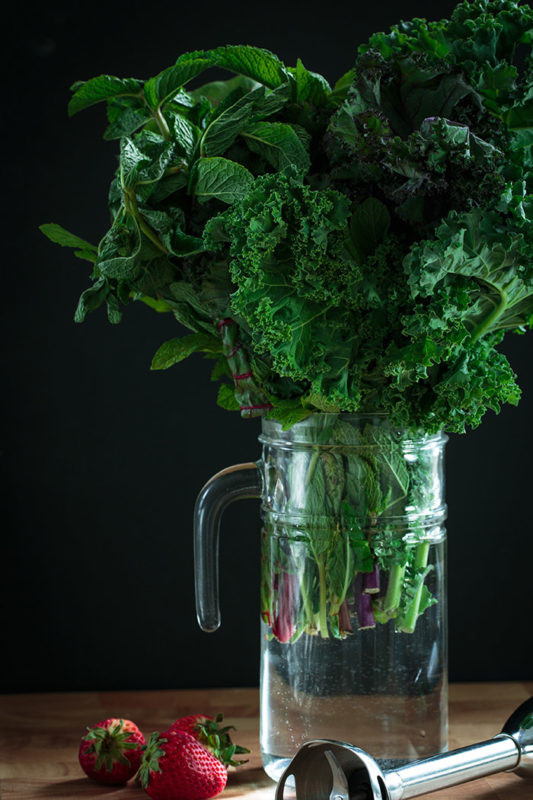
Harvesting kale requires some scissors or a sharp knife and a bowl or bucket to put the harvested leaves. That's all. Easy as pie.
When harvesting this plant, pick the outer leaves first to allow the inner core to continue growing and developing new leaves. Kale is a cut-and-come-again crop, so planting multiple plants allows you to pick leaves from each without exhausting a single plant.
Harvest when the leaves have reached the desired size, usually about 8-inches long. If you're growing for baby greens, harvest sooner than full-size leaves. Generally, you can count on kale being ready in about 50 days.
For best results, I wash my kale right away and store it in leftover plastic grocery bags in the fridge. Wash before storing to help retain moisture and keep the leaves crisp and fresh. I've had luck with this method to keep leaves on hand for about a week and a half. Other gardeners insist on drying kale leaves before sticking them in the fridge, so play around and see what works for you.
Recipes
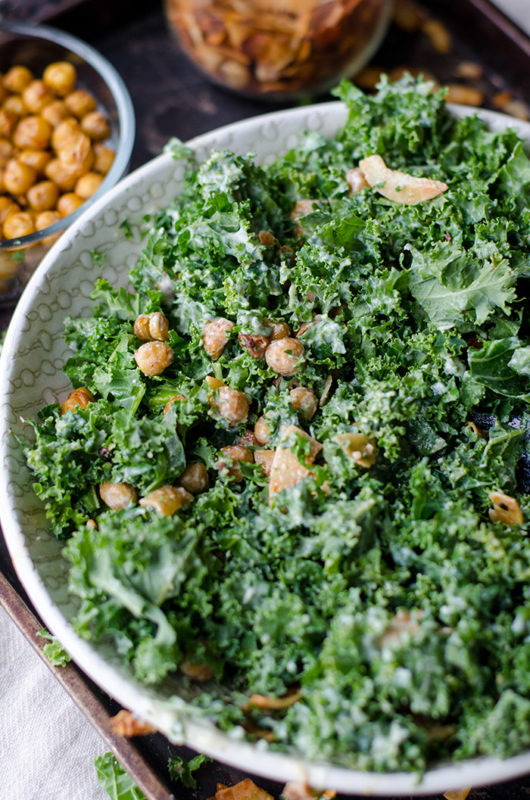
Kale is delicious raw or cooked. I like to toss it in some salad dressing, add some cheese or nuts and maybe a little protein and it's basically a complete meal.

If you haven't tried baked kale leaves, make it a priority. Toss leaves in olive oil, add some salt, pepper, and garlic powder. Bake in the oven at 350°F until crispy.
Kale is truly my favorite garden veggie to grow. There are so many different varieties it's so much fun to experiment and grow new kinds of kale. Each year I try and hunt down a new type to try. What kind of place does kale have in your garden?

Was this article helpful?
Yes No
Square Foot Gardening Spacing Kale
Source: https://morningchores.com/growing-kale/
Posted by: knutsonclevestimen.blogspot.com

0 Response to "Square Foot Gardening Spacing Kale"
Post a Comment